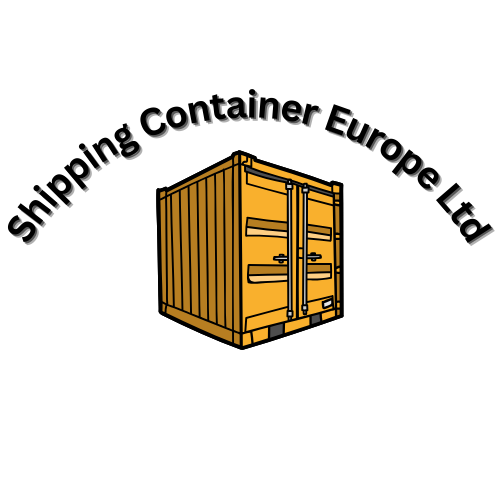Storage containers are everywhere—from the boxes under your bed to the giant steel containers stacked at ports. They keep our lives neat, safeguard our food, and move nearly everything we buy. Big or small, these containers quietly shape how we store, organize, and ship the items that keep the world turning.
Common Types of Storage Containers
Shipping and Industrial Containers
 Photo by Kaique Rocha
Photo by Kaique Rocha
Industrial storage relies on containers built for strength and specific jobs. Here are the most familiar types:
- Dry Storage Containers: The standard box for shipping, cut out for general-purpose goods. They come in sizes from 20 to 40 feet.
- High Cube Containers: Like dry storage, but a foot taller, for more volume.
- Refrigerated (Reefer) Containers: Insulated units with climate control, used for produce, medicine, and other perishables.
- Flat Rack Containers: Designed without fixed sides so you can load heavy gear or oversized cargo easily.
- Open Top Containers: These have removable roofs for cranes to load bulky or awkward items from above.
- Tank Containers: Cylindrical units inside a sturdy frame, perfect for hauling chemicals, oils, and liquids.
- Bulk Containers: Built to carry dry, loose goods such as grains or minerals.
Beyond shipping, these containers are now found as homes, shops, offices, classrooms, and even swimming pools.
Household and Food Storage Containers
Not all containers ship across oceans—many stay right in your pantry, closet, or car. Everyday containers include:
- Plastic Storage Bins: Ideal for closets, garages, and moves. Durable, lightweight, stackable.
- Glass Jars and Canisters: Non-porous and food-safe, great for jams, spices, and leftovers.
- Metal Boxes and Tins: Airtight and strong; good for cookies, lunchboxes, or valuable odds and ends.
- Silicone Containers: Flexible, easy to clean, and microwave safe.
- Mylar Bags: Popular for long-term storage (beans, rice) thanks to their moisture-proof seal.
- Baskets and Bamboo Containers: Eco-friendly choices for bread, fruit, or bathroom supplies.
Materials and Durability: Choosing the Right Storage Container
Containers come in many materials. Some shine for food safety, others for long-lasting strength, and plenty focus on sustainability.
Benefits and Drawbacks of Plastics and Polyethylene
Plastic containers—especially those made from HDPE or polypropylene—are very common. They are:
- Lightweight and sturdy
- Available in endless shapes and sizes
- Usually budget-friendly
But they have some downsides:
- Prone to staining and odors (especially if microwaved)
- Not always recyclable or biodegradable
- Some older plastics may contain BPA or phthalates
Glass, Stainless Steel, and Alternatives
For purity and style, glass and metal set a high bar.
- Glass: Doesn’t retain smells or stains, food-safe, dishwasher- and microwave-friendly. Can chip or break if dropped, and is heavier than plastic.
- Stainless Steel: Super durable and rust-resistant. Good choice for lunchboxes or bulk dry goods. Not always safe for the microwave.
- Silicone: Flexible, tough, great for the freezer and microwave. Some people dislike how it can hang on to greasy residues.
Eco-Friendly and Sustainable Material Options
Looking for something greener? Several choices offer an eco-friendly edge:
- Bamboo: Lightweight, biodegradable, naturally anti-bacterial, and stylish for dry goods or bread.
- Mylar: Ultra-durable for long-term dry food storage, though usually single-use.
- Recycled plastics and glass: Keeps old material out of landfills.
Pick a material based on what you plan to store, how often you’ll use it, and your commitment to sustainability.
Innovations in Storage Container Design and Technology
Container design has shifted quickly with new materials and tech that save space, boost safety, and help the planet.
Smart and Connected Container Technologies
Today’s containers can do more than just hold things. Some are now fitted with:
- IoT Sensors: Track temperature, location, and humidity in real time—vital for medicine or food shipments.
- Solar-Powered Features: Run small devices or sensors, making remote, off-grid containers smarter.
These features add security, cut down on spoilage, and deliver better tracking for both families and companies.
Modular, Foldable, and Space-Saving Designs
Stackable bins and modular units help keep small apartments and giant warehouses neat. Foldable boxes and containers that nest inside each other make it simpler to store away extras when not in use. In larger scales, modular containers let architects and builders create quick-to-build offices, schools, and even homes.
Sustainable Innovations and Green Materials
Eco-conscious design is now a top priority. Look for containers made from:
- Recycled steel or plastic
- Biodegradable bamboo or plant-based composites
- Energy-saving insulation for converted container homes
- Solar panels on container roofs for off-grid setups
With more demand for responsible products, expect future containers to look and act even greener.
Conclusion
Storage containers don’t just organize our closets or ship our goods. They shape the way we live and work, making trade possible and home organization easy. As containers get smarter, stronger, and greener, they’ll keep protecting what matters most—even as our needs and the world around us keep changing.
